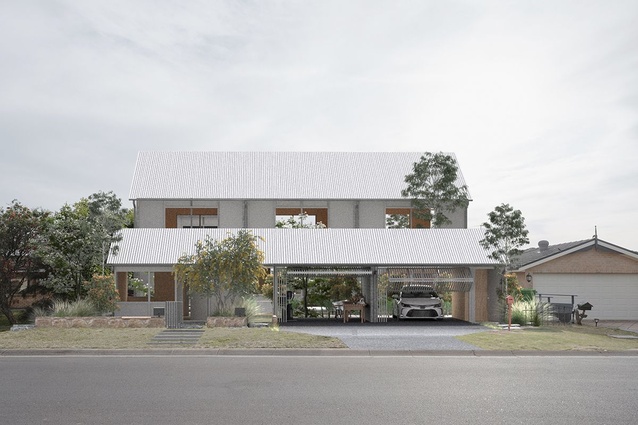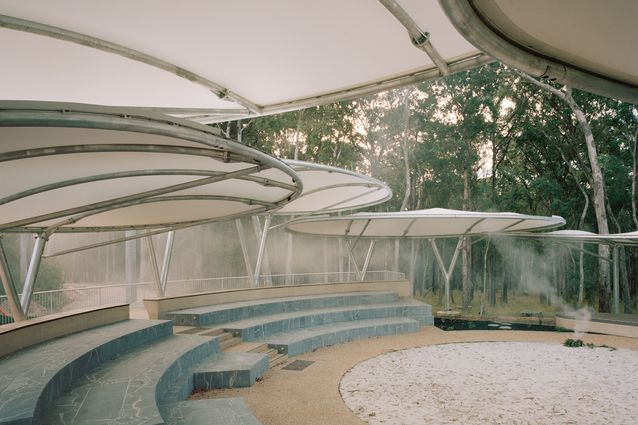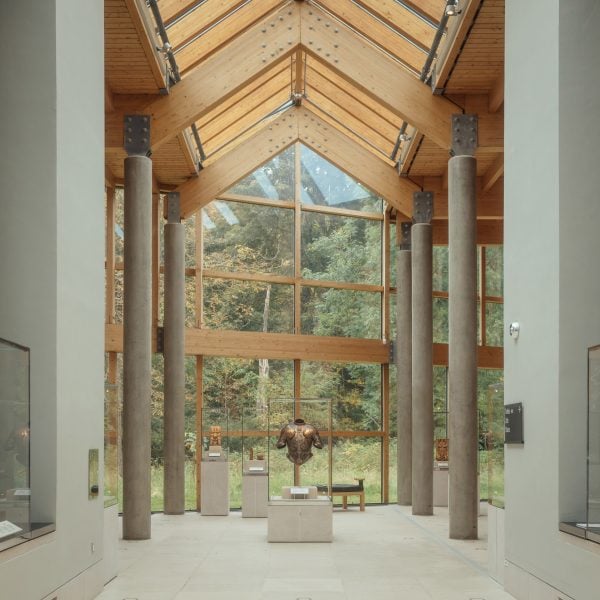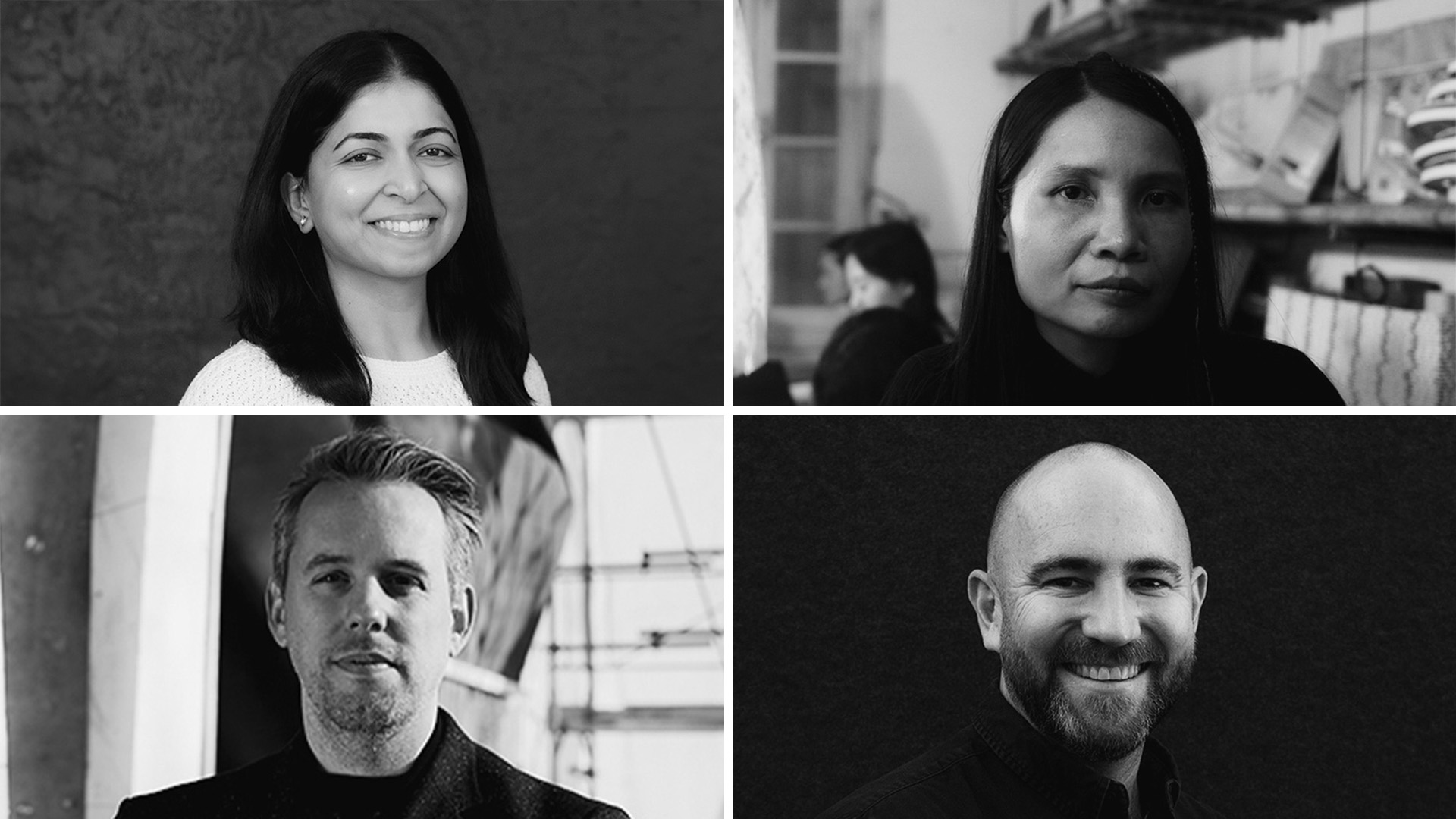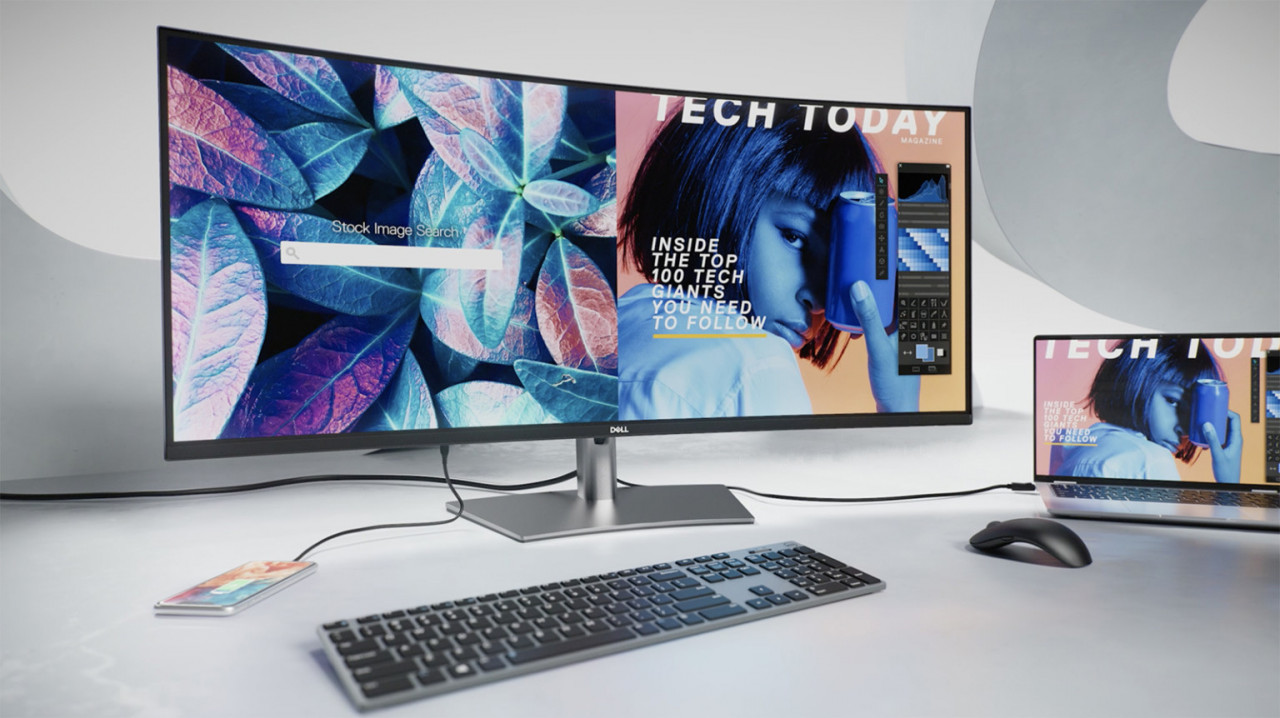Anne Salmond’s practice Salmond Architecture is living proof of how removing barriers to access both at work and in architecture makes for a better work environment, home environment and built environment for everyone.
A founding member of architecture+ in Wellington, Anne moved to Central Otago in 2001 to raise her family and establish a practice that has championed sustainable design and innovative and economical building methodologies. An interest in allowing her staff to “do their lifestyle” has resulted in an unusually diverse workforce and an environment that is open, accessible and encourages creativity.
Anne spoke to Sally Conor and shared her philosophy as an employer and an architect.
Sally Conor (SC): You’ve run your own practice in Central Otago since 2002. Did you set out to create a diverse workplace or did it just happen?
Anne Salmond (AS): I have employed a lot of women in my practice. I’m not sure whether it’s because I’m a woman architect that more young women have applied for jobs here, but I’ve also had quite a number of students working for me during their studies, especially ones who come from the local area.
And because I’ve got three children myself and I’ve had to juggle being a parent with being an architect, I have been very aware of the pressures that time of life can bring. As a result, for both the men and the women in my practice, I’ve had a very flexible approach to time off, to flexi-time, to letting them go off to watch school sports or stay home with sick children or whatever it is.
Interestingly, even before COVID-19, two of my staff who are parents with young children were both set up to work from home. We already had that model in place, mostly so that if they had to be at home to look after a sick child, they could still work from home if they wanted to. I have employed a lot of part-time workers, and I believe in supporting people to do their lifestyle, whether it’s because they’re parents or for other reasons.
SC: What other reasons have you encountered?
AS: I’ve employed sportspeople who have needed time off to compete. I’ve had an international snowboarding champion in the office. I currently work with a woman who is an Olympic judge for kayaking. She goes off for a month at a time to judge in the world champs and the Olympics. Once you provide those opportunities, people take the chance to make their life work for them. Sometimes you don’t know what their passions are until you realise what they’re taking time off for. And as a result, you end up with the whole person as part of your business, not just the professional part of them.
One of these international sportspeople was a disabled snowboarder. He had one leg that was down to the knee and then had a series of fabulous legs that he could interchange for different reasons. He was a serious, medal-winning, snowboarding athlete, representing New Zealand in games all over the world. Again, he needed time off for that, but he also had to manage accessibility not only into our office, but also to meet with clients and so on, which he did very well.
SC: Did working alongside a person with a disability open your eyes to the challenges that exist for people in his position [about a quarter of New Zealanders live with a disability]?
AS: I actually did a research project on accessibility when I was doing my architecture degree. I went and interviewed a guy who used a wheelchair and asked him about what the issues were, both in his home and getting around and about. So I was lucky to be aware of those challenges from when I was still in architecture school.
Then the Code of Health and Disability Services Consumers’ Rights came in and started to provide better tools for what we now call universal design. Even the basics, such as the change in language, stopped people from focusing on what someone with a disability can’t do, and started talking about accessibility, which is so much more positive. To be described as ‘handicapped’ or ‘disabled’ is no longer acceptable and focuses on one tiny part of a person or a person’s experience. As an employer, that tiny part is not the part I’m interested in.
My experience of employing people with disabilities is that it doesn’t affect their ability to do the job I want them to do at all. I employed a young man who had been a builder but suffered a bad spinal injury, to the extent that he spent a long time in the Burwood Spinal Unit. They told him he may not walk again, but he did. He retrained as an architectural technician and because of his building background, he was the most knowledgeable and fantastic employee, who knew way more than I would have expected an average graduate to know. It gave him a whole new level of knowledge because he’d had to retrain. He didn’t lose everything he’d learned as a builder; he actually brought that to the new job.
One of the best pieces of advice I ever got as an employer was to always employ people who are better than you at something. If you do that, then you always have respect for the people you work with. I think the trick is to find out what those people are better at than everybody else in the office and the person trying to employ them.
SC: Has working alongside employees like this one changed the work your practice does at all? For example, are your buildings more accessible that the norm?
AS: I find that in the homes we design, we generally design for accessibility because we know access affects the whole population. It’s not just a small percentage of the people who, if you like, identify themselves as physically disabled. Good accessibility is important for all sorts of reasons.
Down in Wanaka, we quite often encounter people who have fallen off a mountain, had a climbing accident, come off their mountain bike or whatever it is so they are temporarily disabled. One of our clients recently had an accident and injured her leg. She was on one of those knee scooters in her house for quite some time. When I spoke to her, she said, “The house just worked perfectly.” She could go everywhere; she could do everything. It was totally accessible. She could get outside onto the decks and terraces. She really noticed that even though the house hadn’t been designed specifically for that, it continued to function really well. Because we’ve worked with Lifemark a lot and we like to make our houses reach Lifemark 4 if possible and Lifemark 5 if clients particularly want it, you start to just think, well, why wouldn’t we do that? Anything that’s good for people with accessibility issues is good for everyone.
I think accessible design is just good design. The main places we notice it are in slightly wider doorways and slightly wider corridor spaces. We tend to make hallways 1.2m wide, and that is good for the house anyway because it allows the space to have bookshelves down the side or you can park the push chair in the hallway and still get around it or whatever it is. It makes the hallway and the circulation spaces more like a functional space and less like a waste of space.
SC: How about your work environment? How does thinking about the accessibility of your physical office aid or influence your business?
AS: Yes, we have changed our office space from a first-floor office to a ground floor studio, and that’s to benefit everyone we work with, not just staff. We’ve currently got a client who is in a wheelchair most of the time and another client who walks with the help of sticks and crutches but is also sometimes in a wheelchair. They can both get into my office. They can park right outside the door. We’ve got a big sliding door, which opens up sufficiently. They can just arrive at the meeting table and participate easily. As a result, they’re happy to come and attend the meetings in my office, whereas otherwise, I’d be going to them.
I think it makes for a good professional relationship when you don’t have physical barriers. You want to be focusing on the problem-solving and making sure you’ve got the best solution for your clients. You don’t want embarrassment or distraction before you even start the meeting.
SC: Accessibility isn’t just an issue for people living with disabilities – it’s also an age issue. Have you worked in that area?
AS: I’ve designed a retirement home and that was really an interesting project. These people are not commonly described as ‘disabled’ but their movements might be restricted and some of them are fairly confined to their rooms. Using accessibility principles is key but it’s really important to apply that thinking holistically, rather than just thinking about physical access.
For instance, people who build retirement villages have guidelines and rules around what they want to achieve with their budget, and here there was a rule on the maximum square-meterage per room. I stuck with that requirement, but I also added a bay window to each room, which was just cantilevered out beyond the floor area. That simple addition meant there was more than one place in the room where the person could sit. They can sleep in the bed and they can stay there until they’re ready to get up. They can move to the bay window seat if they want to and they can put their feet up and see the activity going on outside. They can be in the sun if they want. They’ve got an alternative place to spend their time and an alternative view and outlook. Something as simple as that can make a huge difference and is another type of accessibility – access to light, a view and a little space to yourself.
Another thing we did on that project (this was before wifi became the norm) I insisted that we should wire up these rooms so that everyone had access to the internet. I said to our client: “Look, this is for me. This is for our generation, who are currently designing these places. That’s where I’m going to end up because you’re building it now and it’s going to last for 50 years. It’s going to be my generation in there and we are not going into a retirement village that doesn’t have internet, because that’s our connection to the world.”
SC: Digital access is a huge issue for lots of communities and you’re right, if you don’t have that these days, you don’t have a connection to the world.
AS: Sometimes virtual access is just an amazing thing. When you look at how constrained people’s lives used to be in retirement villages and how open they are now because of Zoom and Skype and access to information. Keeping in touch with people they love, and having access to contact with others, is so important. Sometimes accessibility is not just physical.
SC: What about those physical barriers though? What are some easy ones we can all help to remove?
AS: I think mostly, it’s the obvious ones: the ability to get into buildings, the ability to get into bathrooms, the ability to go up to public counters and not have to draw attention to yourself. I think it’s like all diversity; you don’t want to be treated as different, weird or fringe-dwelling. You just want to be treated like everybody else. Sometimes the physical environment can make that easy, or it can make it incredibly hard and frustrating.
But good accessibility starts at the front door. For example at cafes and restaurants, all too often the people who are going for a meal go in the front door and someone with accessibility challenges has to go all the way around the back, past the rubbish and the recycling, in through the back-door ramp that is designed for deliveries of large crates of milk and groceries and things, through the kitchen and then finally end up at the table.
Beyond that, good accessibility is built into systems. Bringing a PayWave machine to the table so that the person who has a disability doesn’t have to either ask someone to pay for them or try and access a busy counter in a cramped space that might be at the wrong height can make a big difference. A lot of cafés still expect everyone to order and pay at the counter without realising what a barrier to access that could be.
And then there’s thinking about accessible communities as a whole, and the way people move through them. I remember there was another retirement village being built in Wanaka but it was a gated community. I said, “Why does it need to be gated?” People in Wanaka were still leaving their houses unlocked and their cars unlocked at that time. It was a very safe-feeling community. I said, “This retirement village is sitting between the suburb and town. If people could walk through the public spaces of the retirement village, then they might call in and see their friend’s mother or that guy who they met at bridge or that person who was on the committee of their sports club or something. They might just see them sitting outside and go and say hi.”
I also suggested they put a little café in the retirement village so that people didn’t have to invite someone they didn’t know very well into their really small home, their private space. Because it was on a corner, it would have meant the cafe was for people in the village, but also the general public could come and use it as well.
SC: It’s really just about creating opportunities to connect, isn’t it?
AS: Yes, and it’s about removing barriers and recognising those barriers aren’t always physical. Sometimes they’re in people’s attitudes and unchallenged assumptions, too.
SC: You’ve long been an advocate for sustainable buildings and technologies. Are issues around climate change also issues of accessibility?
AS: I was talking to someone the other day about climate change and how we’re going to have bigger rain events. Look at Napier at the moment [unprecedented rainfall had recently caused serious flooding in Hawke’s Bay]. What does that mean for accessibility? If you want to raise your finished floor level further above ground level to prevent flooding your house, how do you make sure you retain access? Is a building still accessible if there is only one door accessed by a ramp and the house is above the flood level? Should we have level-access outdoor areas or decks also above flood level?
These are all problems that can be solved through good design and as I said earlier, accessible design is just another term for good design. Climate change will impact on all of us, but because of the well-documented issues around equity of access for those who live with disabilities, it will impact more on those people who already struggle to get what they need.
SC: For practitioners who need to upskill in their knowledge and understanding of accessibility issues, what are the best resources that you’ve found in this area? For example, you’ve already talked about the Lifemark design principles.
AS: I’d say probably for residential construction, Lifemark guidance is the best. Just the process of working through it shows you how to do better. For anyone who is a provider of houses, as opposed to an individual person buying a one-off house, I think a Lifemark rating should be mandatory. Even if you didn’t specify Lifemark 5 or Lifemark 4, but every building has to be rated, then someone who realised they were only designing to Lifemark 2 might get the message and think, “We can do better than that”.
It’s a bit like giving something a Homestar rating. If you do the rating and find you’ve only got a 4 and you know the minimum is now 6, you start to think, “Okay, we’re not doing well enough here.” They’re methods that provide education at the same time.
Universal design principles are really helpful, too. For example, the principles that describe creating good signage for people who live with partial blindness or deafness, speakers of other languages, sign language speakers and so on, so that people can see from the image what the sign is saying. In public buildings, this is pretty well covered, but I think that there are some places in residential design where it would be really easy to improve things.
SC: Are you seeing any examples of ways things are getting better?
AS: Yes, I see more people doing little local things. In Wanaka, there is a group of people who started a public shed, a group of builders. They get waste materials from building sites, take it down to this facility and then tradespeople or anyone who wants to go in can make things from the recycled materials.
When I was talking to them last, they were making ramps to get into houses. They were just little movable ramps to help people get in and out. That could be, for instance, someone who’s had an accident and is in a wheelchair, either short or long term. It could be somebody who’s just had twins and they’ve got a double buggy and how do they push it with all the supermarket shopping hanging over it into their house? There may be times when people want that kind of thing temporarily. It’s these little things that give me hope.
SC: Finally, if you could address someone who was in the position of being able to hire someone with a disability, but was hesitating, what would you say to that person?
AS: I would say, with anyone you’re interviewing for a job, be clear and ask the person what they think their strengths are and how they can be supported. Often disabilities are not at surface level. There are so many different ways to work and design now, you just never know what unique skills or support requirements you might be dealing with. But by starting those conversations early, you’re opening up the potential to keep talking about it.
The other benefit of these conversations is that often what many of us think is helpful and supportive actually isn’t. I know a young woman who’s in a wheelchair and people are always trying to grab the back of her wheelchair and wheel her into places. They think they’re being helpful and if she turns around and snaps at them and says, “Leave me alone, I can do it myself,” they’re often quite affronted, even though they didn’t ask her what help she’d like. They’re just making assumptions, barging in when she may prefer to be independent. You have to talk to people and actually listen.
SC: Are you hopeful for the future?
AS: I am. We’re designing some toilets for a college at the moment and they’re ripping out an old building that was segregated by gender and rebuilding it. The showers and toilets are all going to be unisex. That’s partly so that when they are used by two sports teams and they’re all boys, they can use both changing rooms, and if they’re all girls, they can use both changing rooms. But it also means that people can choose whichever changing room is most appropriate for them. The showers have all got room for you to change in the shower cubicle. You don’t have to shower and then go and be in the changing rooms. The difference in the planning is so slight. There’s no extra cost and it’s just thinking about gender diversity and human diversity, and now that it’s being talked about, whereas in the past, it wasn’t. I think every generation looks for the fight ahead, but it’s nice to look back and see how far we’ve come.
This article was first published by The Diversity Agenda, a joint initiative between ACE New Zealand, Engineering New Zealand and Te Kāhui Whaihanga New Zealand Institute of Architects, which aims to improve diversity and inclusion in the architecture and engineering professions. Sign up and become a member at diversityagenda.org.




